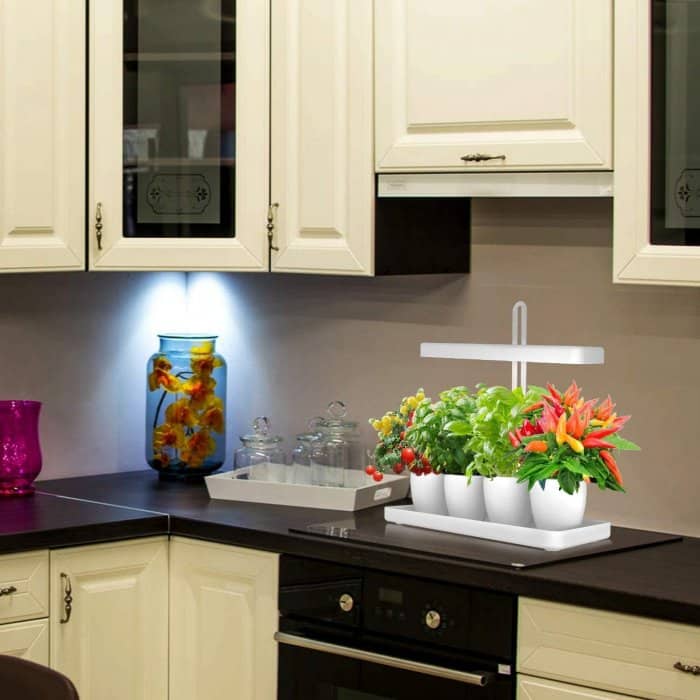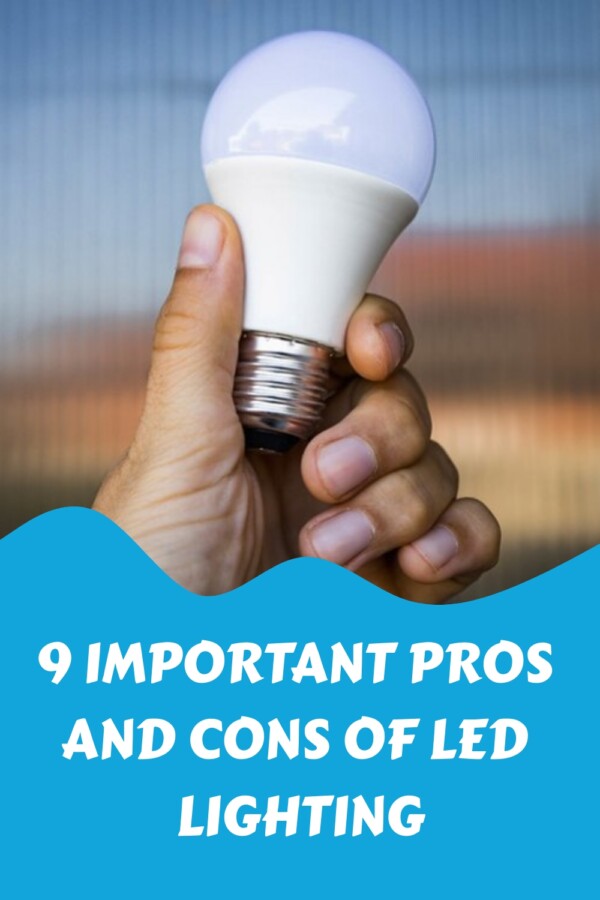Are you curious about the benefits of LED lighting? Are you looking for ways to reduce your energy bills and save money in the long run? If so, then this blog post is for you! We’ll explore the pros and cons of LED lighting so that you can make an informed decision about whether or not it’s right for your home.
LED bulbs are becoming more and more popular, but there are a lot of misconceptions about them. A lot of people think that LED bulbs are just like CFLs, but that’s not the case. They have their own set of advantages and disadvantages that you need to be aware of before making a purchase.
Let’s get into the advantages and disadvantages of LED bulbs so that you can make an informed decision about whether or not they’re right for you.
Pros of LED Lighting

1. Longer Lasting

LEDs have the advantage of being incredibly long-lasting, with an average lifespan of about 50,000 hours. This is significantly longer than other types of lighting such as fluorescent and incandescent bulbs, which generally last between 2,000 and 15,000 hours.
This means that LED lights can provide you with a reliable light source for many years to come. Not only does this mean less hassle for you in terms of changing the bulbs regularly, but it also saves you money in the long run as you don’t have to keep buying replacement bulbs.
See Related: Solar vs Wind Energy: What’s the Difference?
2. Energy Savings

LED bulbs also offer significant savings when it comes to energy consumption. LEDs use up to 80-90% less energy than most conventional lighting technologies such as traditional incandescent bulbs, making them a much more efficient option.
This means that you can reduce your energy costs by investing in LED lighting solutions. Not only is this good for the environment, but it also helps to save you money in the long run. In addition, the longer life span of LED lights means that you won’t have to replace them as often as other bulbs, so you can further reduce your costs.
3. High-Temperature Effects

LED lighting fixtures have the advantage of being able to handle high temperatures. This makes them especially useful in areas where high temperatures are common. The LED lights make use of heat sinking and thermal management mechanisms, which effectively dissipate heat into the surroundings.
Even in high temperatures, they are not likely to overheat and fail, which makes them a great choice for areas such as factories, warehouses, and outdoor locations. LED lighting also has excellent impact resistance and high-temperature resistance, making it an ideal choice for any location where long-term performance is essential.
See Related: Best Home Energy Saving Products to Buy Today
4. Tray Ceiling with Recessed LED Lighting

When it comes to tray ceilings, recessed LED lighting offers a great solution for adding a modern touch to the room. These lights provide a clean, streamlined look, allowing the room to be bathed in light without the need for bulky fixtures.
Additionally, they are energy efficient, with little heat being produced and lower power usage. They also come with a higher initial cost, but their longer life makes them well worth the investment. Furthermore, the color temperature of the lights can be adjusted to create the perfect ambiance in any room.
See Related: Important Algae Fuel Pros and Cons to Know
5. Higher Efficiency and Lower Power Usage

LED lights are extremely energy efficient, consuming up to 90% less power than an incandescent light bulb. This remarkable energy savings means that LED lights are cheaper to run and last much longer, making them a great choice for any home or business.
Furthermore, LED lights come in a variety of colors and styles, making them an ideal choice for any lighting application. Not only do they provide superior light quality, but they also have the added benefit of being more versatile and customizable.
6. LEDs attract fewer bugs and insects

LED lights are a great alternative to traditional incandescent light bulbs and other conventional outdoor light sources, as they are much less attractive to nuisance insects. Research from the University of Bristol has revealed that the higher wavelengths of LED lights are invisible to most bugs, meaning they don’t get attracted to them. Although there’s no guarantee that an LED light won’t attract bugs, it is much less likely due to the wavelength.
The use of LED lights has the potential to reduce disturbances to wildlife and insect-borne diseases, making them essential for any outdoor night-time event. LED lights can create a comfortable atmosphere, free from the invasion of bugs and insects in the dark.
See Related: How to Make a Commercial Building More Energy Efficient
7. Less Heat than Other Bulbs

LED bulbs produce much less heat than traditional lighting, making them a great choice for many situations. Incandescent lights produce approximately 90% of their energy as heat, while LEDs produce only 20%. In addition, the absence of a thermal management mechanism in incandescent bulbs can make them extremely hot to the touch, while an LED bulb remains cool.
This makes LED lights a safer option for homes and businesses with young children or pets. Halogen lights produce even more heat than incandescent bulbs, making LED lights an even more attractive option.
Cons of LED Lighting

8. Higher Initial Cost

Despite the many advantages of LED lighting, there is one major downside to consider: the initial cost. LED bulbs are more expensive than traditional incandescent bulbs and the fittings required to install them can also be costly.
However, businesses should remember that LED lights are an investment that will pay off over time due to their long lifespan, energy efficiency, and lower power consumption. The cost savings in electricity consumption alone can quickly make up for the higher initial cost.
Therefore, while LED lighting may require a bit of an upfront investment, the long-term benefits make it a wise choice for businesses in the long run.
See Related: Do Energy Efficient Light Bulbs Give Off Radiation?
9. Increase Blue Hazard

Despite the numerous benefits of LED lighting, it is important to remember that there are potential hazards associated with blue light exposure. Blue light from LEDs can be reflected from a surface and reach our eyes, potentially causing retinal damage.
Also, manufacturers usually increase the blue light intensity of the LED light source in order to pursue brightness, and this too can have negative impacts on our health. Therefore, it is important to be mindful of the amount of blue light exposure we receive when using LED lighting.
What is LED lighting?

Light Emitting Diodes (LED) lights have rapidly replaced conventional lighting such as fluorescent, incandescent, or LED lamps. LED lights are semiconductor materials made up of silicon and selenium. Electric energy is passed through a diode-like substance to create LED lights.
The electricity thus generated creates visible sunlight. Although LED lights are recently gaining a resurgence, they were first developed approximately 50 to 70 years ago.
The mechanism by which electricity is used to create light is by the movement of electrons from their ground state to an excited energy state. When electrons are in the excited state, they emit photons of light.
The color of the light emitted depends on the energy difference between the excited and ground states.
How do LED light bulbs work?

An LED light bulb works by transferring electrical energy to the semiconductor material, which then produces electrical currents and light through a process called electroluminescence. This process works by passing an electrical current through the semiconductor material, which in turn produces light.
LEDs are more efficient than traditional lighting solutions, as they produce more light per watt. They also last longer and use less energy than other lighting sources. LED technology is also becoming increasingly popular as it can be used to create different colors and can be controlled in various ways, making it a great option for any home or office.
FAQs
What are the downsides to LED light bulbs?
LED light bulbs are generally a more energy-efficient and long-lasting alternative to traditional incandescent light bulbs, however, there are some drawbacks. One disadvantage is that LEDs often emit more blue light than incandescent light bulbs, which are more on the red end of the spectrum and the bulbs can overheat if exposed to too much heat, and may not be compatible with dimmers.
Furthermore, LED bulbs tend to be more expensive to purchase upfront than traditional incandescent light bulbs, though they will pay for themselves over time through energy savings. Finally, LED lamps may increase the blue hazard and color shift due to aging and overdriving.
Are LED strips or bulbs better?
LED strips offer a more cost-efficient option when compared to bulbs, as they produce more light and heat output for a reduced cost of use. A typical incandescent 40W light bulb produces 400 watts per meter of white LED tape, making LED strips an ideal choice for energy-efficient lighting.
Related Resources
- Important Pros and Cons of Hydroelectric Energy
- Ways to Conserve Natural Resources
- How Are Fossil Fuels Taken from the Earth?


